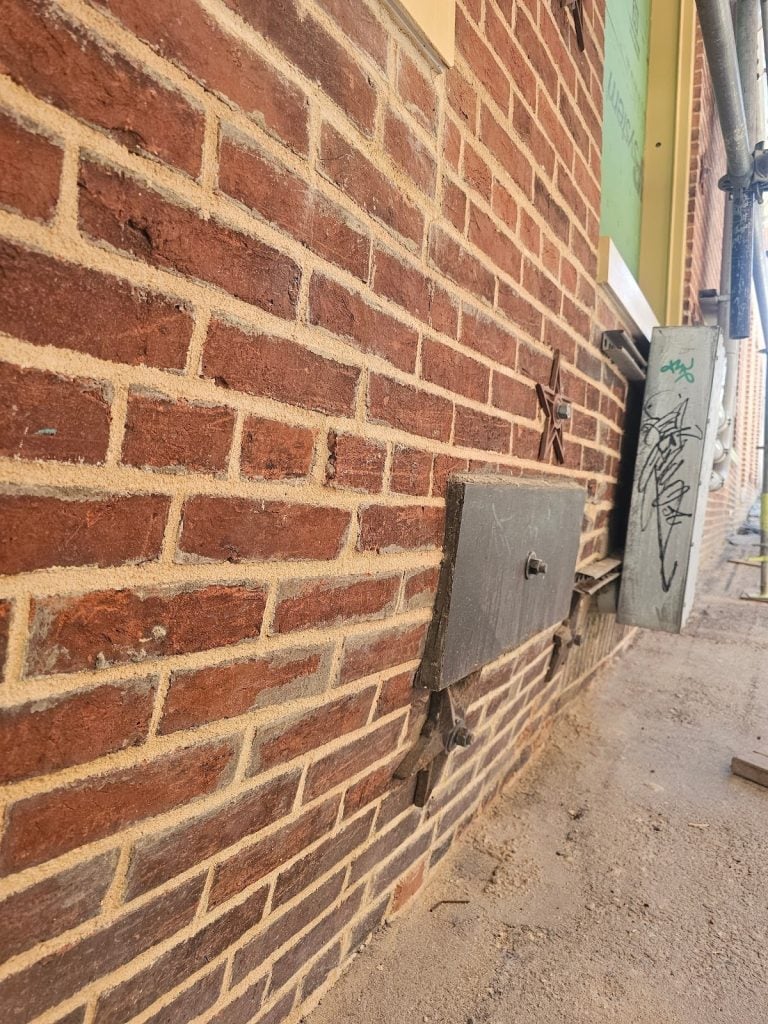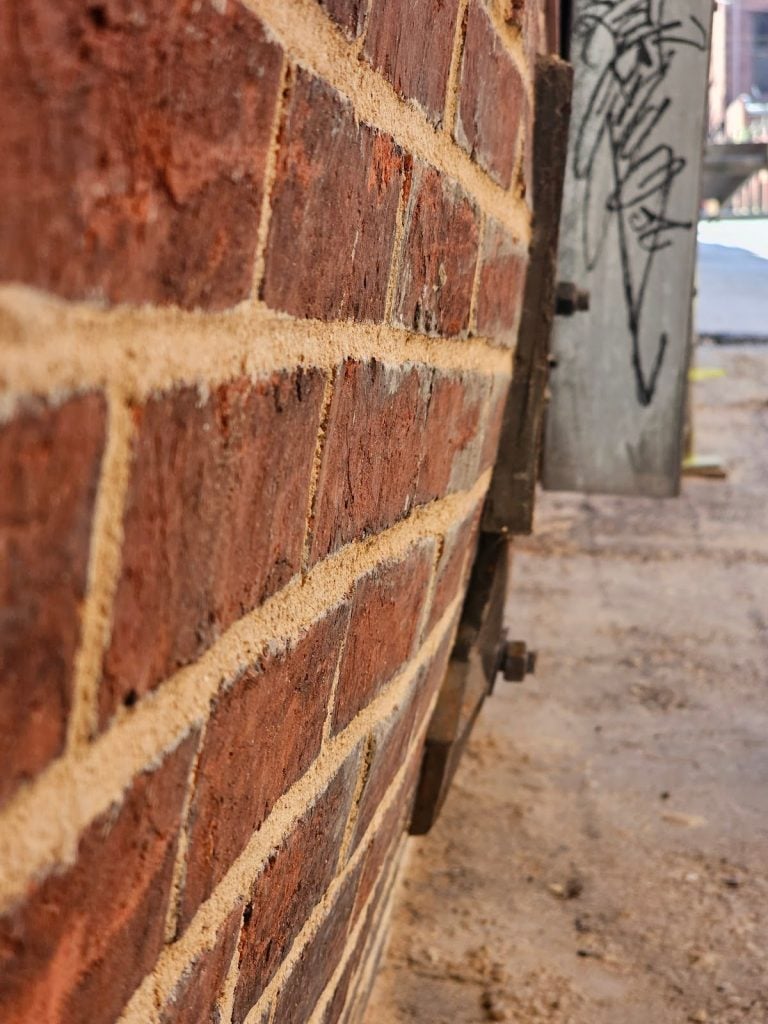Severe Lateral Deflection in a Masonry Facade
Here on our blog and here on our website we’ve looked at this topic before, related to lateral deflection. The issue and type of problem has also come up in discussions and other types of issues related to structural masonry capacity. There are numerous potential causations that can lead to deterioration.
Generally the majority of these problems can simply be avoided by routine maintenance and upkeeping particularly through professional repointing. In other cases though, issues of differential settlement can also affect or compound problems of lateral deflection. Historic buildings are arguably stronger than modern buildings, in many ways. They were built with much heavier and larger elements of construction. For example, lightweight exterior walls today might be built with 2×4 studs and covered with drywall on the inside and fiberboards as thin as cardboard on the exterior. Then the exterior might be clad and something like vinyl siding. Vinyl siding is made of thin plastic, basically, and it’s super lightweight.
New modern buildings like this are not just lightweight, but also they are weak by comparison. Today, many of these historic masonry buildings have elements of deterioration that need to be repaired, but the modern or contemporary buildings of today might not even last for the same 122 to 145 years.
We picked those numbers, not just randomly, but because many of the houses here in the historic parts of Washington DC are roughly about 122 years old. There are also many notable examples of houses that are even older, built with similar types of masonry, up to about 145 to 150 years old. Those houses, although in need of upkeep qnd repair, hold up well. They’re strong. Repointing is an example of a type of upkeep that is unique. It isn’t often needed on modern buildings, for example.
One very big and important difference between historic and modern buildings is that historic buildings were almost all built with lime mortar and not portland mortar. Portland mortar has a much higher compressive resistance strength and should last much longer than lime mortar before it needs to be repointed. Back in the olden days though, portland mortar wasn’t available. At the time of the original construction of these historic buildings in DC, people used lime mortar instead. The use of lime mortar goes back for thousands of years.
The picture below shows the base of a wall with a significant sag. That sag is an example of lateral deflection. Essentially, the brick that comprises that wall began to shift and bow outwards at the bottom. It probably didn’t happen quickly. It probably took decades for the deterioration problems to become so significant that it caused the bowing. Also, the bowing probably happened very slowly over a long period of time. You can see that areas of this particular brick mortar have been repointed. They haven’t really been pointed well because the application looks sloppy. Nonetheless, somebody has taken notice and understood that the repointing was needed.

The next picture below shows an even closer view of the same area of the wall. Here you can see the bow more drastically. It is extreme. Sometimes these curves and deflections are difficult to show in a photograph. Here though it’s so extreme you can even detect it in a photograph. Where the electrical pull box or junction box is mounted against the wall, you can see this difference. The box is flat. The wall has such a curve that the flat back of the box can’t even sit tight against the wall at any point along the juncture.

This coming week we’ll look at other pictures of other types of areas and issues at the same building and other buildings as well.
We can Help
Our company focuses on historic restoration more than modern building upkeep, maintenance, and construction, but our company understands both types of construction very well and a full picture well-rounded approach is needed in any niche in the construction industry. Although we focus on historic restoration, repointing, tuckpointing and historic brick repair, our company also has technical knowledge and competencies in the areas of modern and contemporary construction as well as we become one of the leaders in that area of the market today. Understanding both historic and modern or contemporary construction is useful because both aspects help understand the challenges and potential solutions for challenges in building science and construction.
We can help with a variety of historic masonry restoration needs and upkeep, from modest tuckpointing and or repointing to complicated and extensive historic masonry restoration. Infinity Design Solutions is a historic restoration specialist contractor specializing in both historic masonry restoration such as tuckpointing our repointing, and brick repair. If you have questions about the architectural details or facade of your historic building in Washington DC, reach out and say hello and if we can help we’ll be glad to assist you. You can email us or call us on the telephone at the following link: contact us here.
